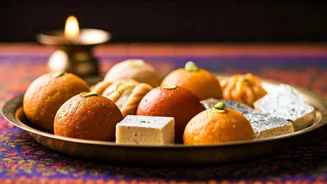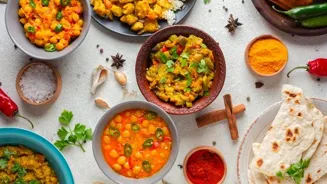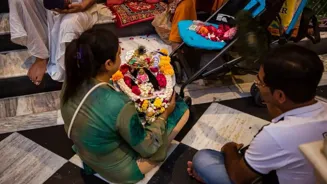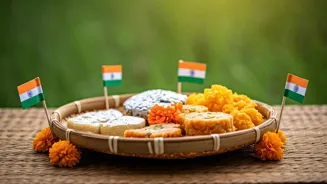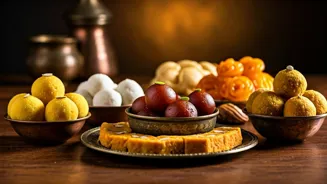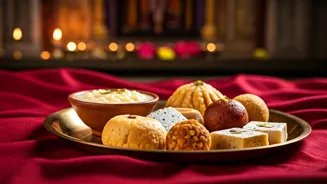Aromatic Blessings Begin
Janmashtami celebrations often begin with the gentle waft of incense, a tradition deeply rooted in Indian culture. The fragrance of sandalwood, rose, and jasmine
fills homes and temples, creating a serene atmosphere that welcomes the divine. These scents are believed to purify the air and invite blessings.
The Sweetest of Flavors
No Janmashtami is complete without a spread of traditional sweets. From the rich textures of pedas and barfis to the comforting sweetness of ladoos, these treats symbolize the joy and love associated with the festival. These sweets are often offered to Lord Krishna as a mark of devotion and shared with family and friends.
Culinary Delights Unveiled
The culinary traditions of Janmashtami extend beyond sweets. Many families prepare elaborate vegetarian feasts, featuring dishes like kheer, sabudana khichdi, and a variety of vegetables. These dishes represent the diverse and vibrant cuisine of India and are cooked with love and devotion.
A Sensory Experience
Janmashtami is more than just a religious observance; it's a vibrant tapestry woven with colours, sounds, fragrances, and, most importantly, flavours. The festival allows devotees to immerse themselves in a truly holistic experience, celebrating the birth of Lord Krishna in a way that engages all their senses.
Flavours of Festivity
As you partake in the Janmashtami festivities, remember that each flavour and fragrance has a story to tell. The spices, the ghee, the incense - all play a part in creating a special experience, reminding us of the richness of Indian culture and the significance of devotion.

